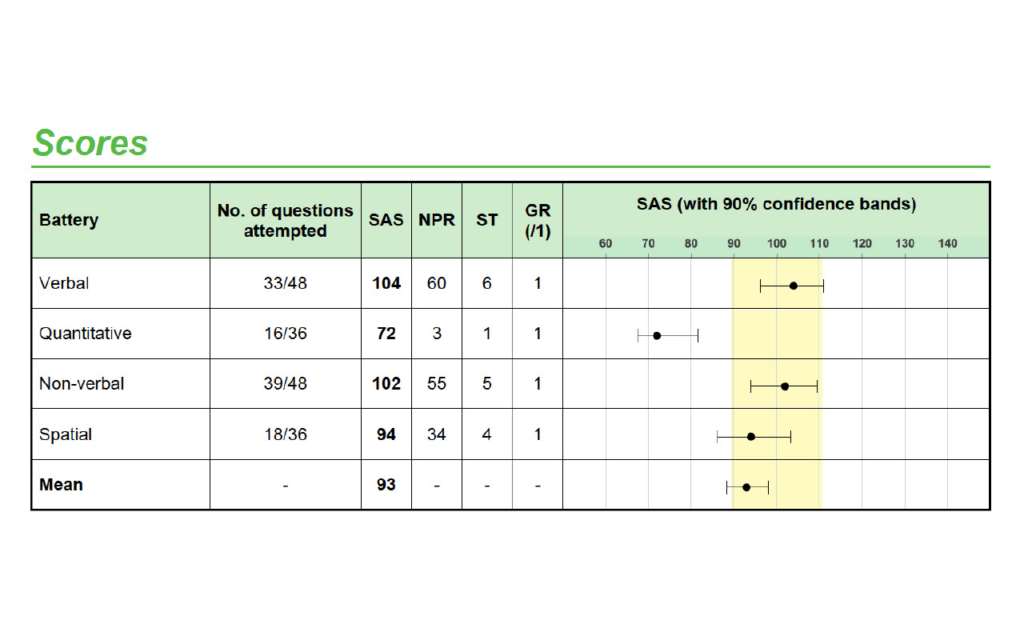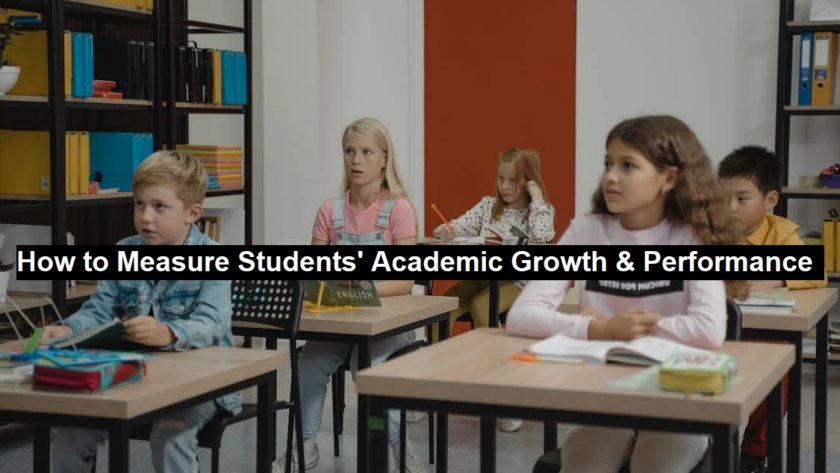How to measure students’ academic growth and performance is a key question for educators and parents aiming to support student success. Understanding progress helps identify strengths, address challenges, and create tailored strategies for improvement.
In this article, you’ll discover proven methods and tools that simplify tracking academic growth while ensuring reliable results. By the end, you’ll have actionable insights to guide students effectively and improve learning outcomes. Keep reading to unlock strategies that can make a real difference in student achievement.
Why Measure Academic Growth and Performance?
Measuring academic growth and performance provides essential insights into student progress, revealing areas of strength and opportunities for improvement.
These insights are key for educators to making informed decisions that enhance teaching strategies and align with learning goals. For parents, they offer a clearer understanding of their child’s development and ways to support learning at home. By assessing progress, educators and parents can work together to ensure every student reaches their potential.
How Assessment Drives Teaching and Learning
Effective assessments are central to improving both teaching strategies and learning outcomes. By understanding student progress, educators can tailor lesson plans to focus on areas needing attention, leading to better engagement and performance.
Assessment data provides actionable insights, allowing teachers to identify trends, address challenges, and implement targeted interventions. For school administrators, this data supports strategic decisions like resource allocation and program evaluation. Assessments create opportunities for personalized learning and meaningful student progress when used effectively.
Read: Start a Meaningful Career with a Respiratory Therapy Degree from Platt College
Types of Assessments
Understanding different types of assessments helps parents and teachers track student progress effectively. Each type serves a unique purpose and provides valuable insights into learning.
Formative Assessments
Formative assessments monitor learning during the process to provide ongoing feedback. Examples include quizzes, discussions, and practice exercises. These assessments help identify challenges early, allowing adjustments to teaching and support strategies for better outcomes.
Summative Assessments
Summative assessments evaluate overall achievement at the end of a term or course, such as standardized tests or final exams. They measure how well students meet academic standards and offer insights into areas for improvement.
Diagnostic Assessments
Diagnostic assessments, like pre-tests, establish a baseline of a student’s knowledge and skills before instruction. This helps tailor lessons to address specific needs and build on existing strengths.
Alternative Assessment Methods
- Portfolio Assessments: Students showcase their work overtime to highlight progress and skills.
- Performance-Based Evaluations: Real-world tasks, such as presentations or experiments, assess practical applications.
- Self and Peer Assessments: Students reflect on their work or evaluate peers to build accountability and collaboration.
Popular Tools for Tracking Growth

A variety of tools and assessments help measure students’ academic growth and performance. These tools provide valuable insights, enabling parents and teachers to understand progress and tailor support effectively.
Standardized Tests
Standardized tests are a reliable way to evaluate student performance against established benchmarks. These tests provide consistent data for comparing results across different contexts.
- NWEA MAP Test: This computer-adaptive test measures growth in key areas like math and reading, offering personalized insights into progress.
- CAT4 Test (Cognitive Abilities Test): A widely used assessment of reasoning skills, helping educators and parents understand student potential.
- Iowa Assessments: A comprehensive standardized test covering core subjects, often used to track progress over time.
- State-Specific Tests: Assessments like the STAAR in Texas or PARCC in several states measure achievement based on local standards.
Benchmark Assessments
Benchmark assessments provide a snapshot of student understanding at specific intervals during the school year. They help track progress toward academic goals and guide interventions when needed.
- DIBELS (Dynamic Indicators of Basic Early Literacy Skills): Focused on early reading skills, this tool helps identify students who may need additional support.
- Interim Assessments: Used in schools to monitor progress mid-year, allowing adjustments to teaching strategies.
- District or School-Based Benchmarks: Custom assessments tailored to align with local curriculum goals.
Computer-Adaptive Testing
Computer-adaptive tests (CATs) adjust the difficulty of questions in real-time based on student responses. This approach ensures precise and individualized assessments.
- Features:
- Immediate feedback to students and teachers.
- Tailored difficulty levels to match each student’s abilities.
- Popular CATs include the NWEA MAP, Smarter Balanced Assessments, and STAR Assessments.
Other Popular Assessment Tools
- PSAT and SAT Suite: While often used for college readiness, these tests also provide insight into academic growth over time.
- Reading and Math Inventories: Tools like the Lexile Framework for Reading and Quantile Framework for Math assess individual skills to guide instruction.
- Teacher-Created Assessments: Custom quizzes and projects designed by educators provide flexibility to measure growth in specific classroom contexts.
Models for Measuring Growth
Understanding different models for measuring growth can help you track a student’s academic progress and make informed decisions about their learning journey. These models focus on various aspects of growth, from individual achievements to comparisons with peers.
Value-Added Models (VAM)
Value-added models measure how much a student’s performance improves over time, considering their starting point. This approach can help you evaluate how effective teaching methods or educational programs have been.
How They Work
VAM compares a student’s current performance to predictions based on their past achievements. By factoring in previous test scores, it estimates the “value” added by the instruction they received.
Benefits and Limitations
| Benefits: | Limitations: |
| Helps you identify effective teaching strategies.Focuses on growth rather than just achievement levels.Useful for evaluating the impact of teaching or interventions. | Relies heavily on standardized test data.May not account for external factors, like home environment or other influences. |
Student Growth Percentiles (SGP)
Student growth percentiles show how a student’s progress compares to peers with similar prior achievements, offering a relative measure of growth.
Interpreting Percentiles for Student Progress
A percentile score, such as the 60th percentile, means the student’s growth is greater than 60% of their peers with similar starting points.
| Strengths | Challenges |
| Easy for you to understand and explain.Provides a clear sense of how a student is progressing compared to others. | Percentile scores don’t explain why growth occurred, so additional context is often needed. |
Curriculum-Based Measurements (CBM)
Curriculum-based measurements let you track student progress through short, frequent assessments that align directly with what they are learning in class.
Aligning Assessments with Learning Goals
CBM helps you measure how well students master specific curriculum content and make timely adjustments:
How to Use It:
- Administer brief assessments, such as reading fluency tests or math problem-solving tasks, on a regular basis.
- Chart the results over time to visualize trends and guide instruction.
Benefits:
- Gives you immediate feedback to adapt your teaching or support strategies.
- Helps you understand progress in practical, real-world terms.
Collaborative Approaches to Measuring Growth
Collaboration between parents, teachers, and students is essential for effectively measuring academic growth. By working together, parents and teachers can gain a more complete understanding of a student’s progress and identify the best ways to support their development.
Parent-Teacher Collaboration in Growth Measurement
When parents and teachers work together, they create a more detailed picture of a student’s strengths, challenges, and overall progress. Parents can share observations from home, such as study habits or changes in behavior, while teachers provide insights from the classroom. This combined perspective helps everyone focus on what matters most for the student’s growth.
Tools for Shared Progress Tracking Between Parents and Teachers
Parents and teachers can use tools like parent portals or learning apps to track academic progress in real time. These platforms provide updates on grades, assignments, and attendance, making it easier to stay informed and discuss a student’s progress together.
Strategies for Engaging Parents in the Assessment Process
Parents can play an active role in their child’s education by staying connected and asking questions about assessment results. Teachers can help by providing clear, easy-to-understand progress reports and offering opportunities for parents to share feedback or concerns.
Resources like guides or workshops can also help parents better understand how assessments work and how they can support learning at home.
Communicating Growth and Performance Data Effectively
Good communication is key to helping parents and teachers understand and act on student progress. Reports should use simple, clear language and focus on what the data means for the student. Charts or graphs can make it easier to see trends and identify specific areas for improvement or celebration.
Measuring Group Dynamics in Collaborative Learning
Collaboration isn’t just about parents and teachers—it’s also important to consider how students work together in group settings. Understanding group dynamics can reveal important information about a student’s ability to communicate, share ideas, and contribute to teamwork.
Why Group Dynamics Matter for Academic Performance
When students work together, they learn to solve problems, collaborate, and share responsibilities. Measuring these dynamics helps identify strengths and areas where students might need more support to become effective team members.
Tools to Assess Collaboration Skills and Contributions
Both parents and teachers can use observation checklists, peer feedback forms, or rubrics to assess how students contribute to group work. Apps or online tools designed for collaborative projects can also provide insights into each student’s role and engagement.
Interpreting Group Dynamics Data to Foster Teamwork
Analyzing group interaction data allows parents and teachers to support teamwork skills. For example, if a child struggles to participate in discussions, they can be guided on how to express their ideas more confidently. Encouraging reflection on group experiences helps students build collaboration skills over time.
Conclusion
Measuring students’ academic growth and performance is essential for understanding their progress and guiding them toward success. By using a combination of assessments, collaborative approaches, and data-driven insights, parents and teachers can create a well-rounded strategy that supports both academic and personal development.
Whether tracking progress through standardized CAT4 tests, setting individualized goals, or evaluating social-emotional skills, these methods empower students to reach their full potential. By adopting these tools and strategies, you can make a meaningful impact on every student’s learning journey.




